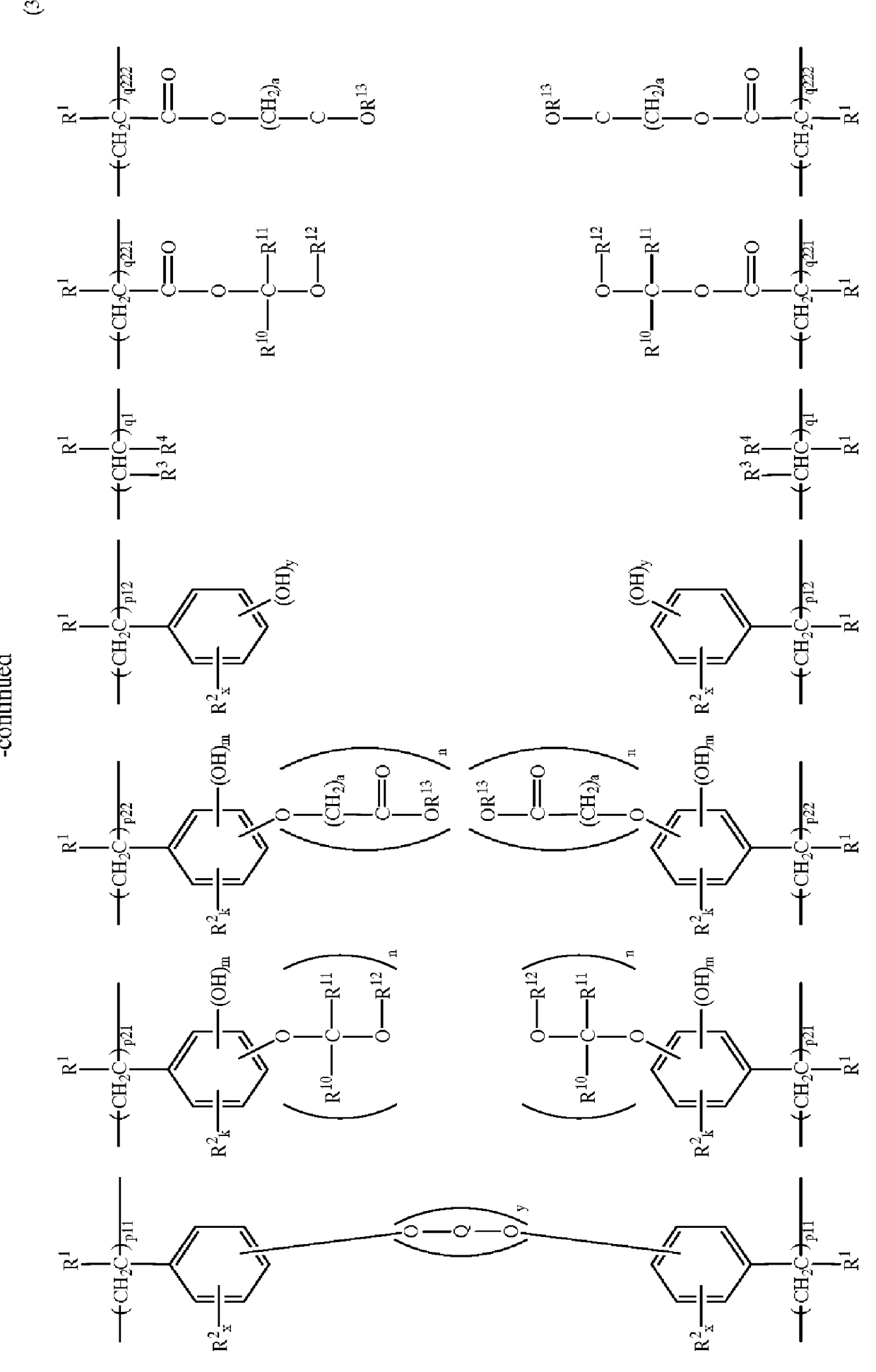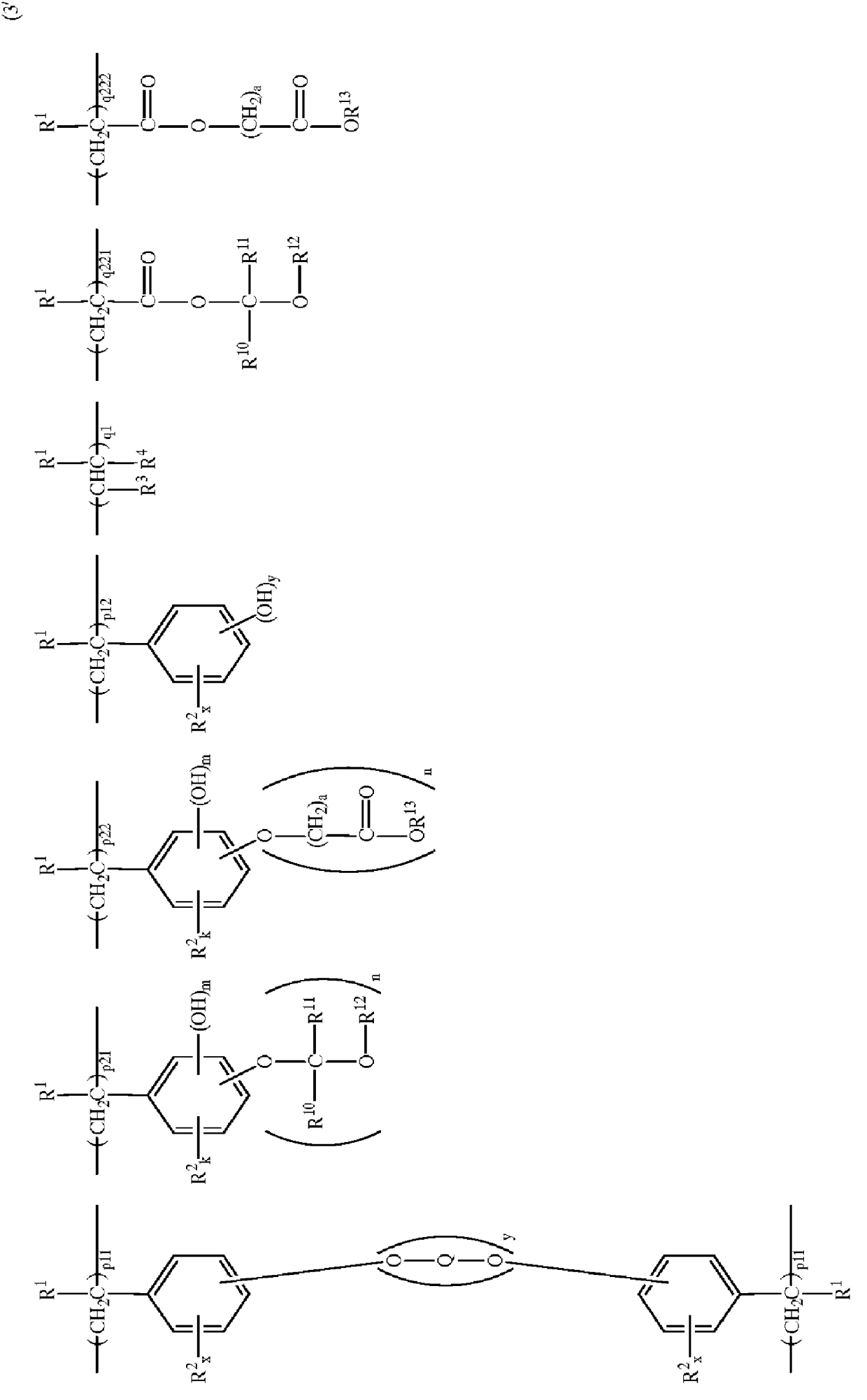Polymers and chemically amplified positive resist compositions
a technology of chemical amplification and composition, applied in the field of polymers and chemical amplification positive resist compositions, can solve the problems of less satisfactory composition in sensitivity and resolution, detracting from heat resistance of bulky groups in side chains, and none of the resist compositions so far proposed are practicably satisfactory
- Summary
- Abstract
- Description
- Claims
- Application Information
AI Technical Summary
Benefits of technology
Problems solved by technology
Method used
Image
Examples
synthesis example 1
A 10-liter flask was charged with 3.5 liters of tetrahydrofuran as a solvent and 1.times.10.sup.-2 mol of sec-butyllithium as a polymerization initiator. To the flask at -78.degree. C., 145 grams of 4-tert-butoxystyrene was added. With stirring, polymerization was effected for one hour. Further, 20 grams of methyl methacrylate was added to the reaction solution, which was stirred for one hour for polymerization. Polymerization was stopped by adding methanol to the reaction solution.
The reaction solution was then poured into methanol whereupon the resulting polymer precipitated. The polymer was separated and dried, obtaining 155 grams of a white solid. Analysis by .sup.13 C-NMR showed that the product was a copolymer consisting of 20% methyl methacrylate and 80% 4-tert-butoxystyrene.
In 2500 ml of acetone was dissolved 150 grams of the copolymer of methyl methacrylate and 4-tert-butoxystyrene. A small amount of conc. hydrochloric acid was added to the solution at 60.degree. C., which ...
synthesis examples 2-3
Polymers represented by rational formulae (Polym.2) and (Polym.3) were obtained by the same procedure as in Synthesis Example 1.
synthesis example 4
A polymer represented by rational formula (Polym.4) was obtained by the same procedure as in Synthesis Example 1 using 4-tert-butoxystyrene and styrene as the monomer.
PUM
| Property | Measurement | Unit |
|---|---|---|
| mol % | aaaaa | aaaaa |
| molecular weight dispersity | aaaaa | aaaaa |
| molecular weight dispersity | aaaaa | aaaaa |
Abstract
Description
Claims
Application Information
 Login to View More
Login to View More - R&D
- Intellectual Property
- Life Sciences
- Materials
- Tech Scout
- Unparalleled Data Quality
- Higher Quality Content
- 60% Fewer Hallucinations
Browse by: Latest US Patents, China's latest patents, Technical Efficacy Thesaurus, Application Domain, Technology Topic, Popular Technical Reports.
© 2025 PatSnap. All rights reserved.Legal|Privacy policy|Modern Slavery Act Transparency Statement|Sitemap|About US| Contact US: help@patsnap.com



